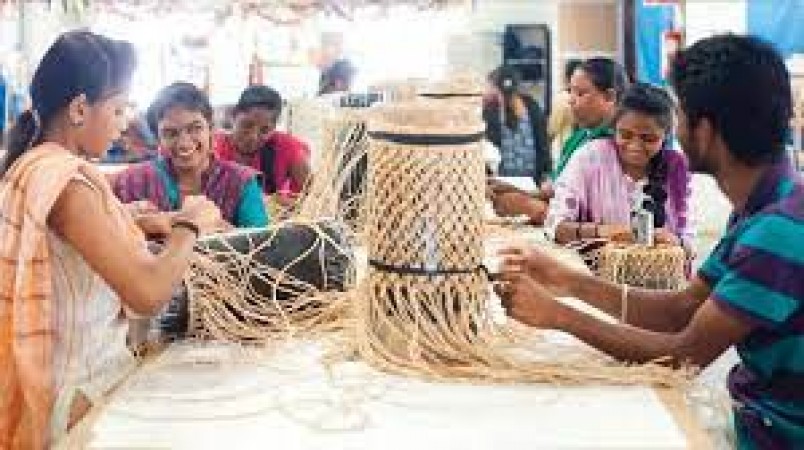
In recent years, there has been a growing global awareness of the importance of supporting local economies and preserving indigenous cultures. The 'Local for Local' campaign has emerged as a powerful movement aimed at promoting and celebrating the unique products crafted by local artisans and communities. This article delves into the significance of the campaign, its benefits, challenges, successful case studies, and the various strategies employed for its success.
2. Understanding the 'Local for Local' Campaign
The 'Local for Local' campaign revolves around the idea of encouraging consumers to prioritize locally produced goods over mass-produced imports. It seeks to foster a sense of pride and connection to one's roots while also nurturing regional industries. By choosing local products, consumers not only access high-quality goods but also contribute to the growth and sustainability of their communities.
2.1 Embracing Sustainability and Eco-Friendly Practices
Sustainability is a core principle of the 'Local for Local' campaign. With the rising concerns about environmental impact, consumers are increasingly drawn to products that are eco-friendly and responsibly sourced. Indigenous products often have a smaller carbon footprint, as they are crafted using traditional methods and locally available materials.
2.2 Government Support and Initiatives
Successful implementation of the 'Local for Local' campaign relies heavily on government support. Governments can play a pivotal role by offering incentives to local producers, providing access to resources, and creating a conducive business environment. Additionally, public policies can be crafted to protect and promote indigenous artistry and knowledge.
3. The Importance of Promoting Indigenous Products
The 'Local for Local' campaign serves as a vital tool for preserving indigenous cultures and traditions. Many artisanal skills and craftsmanship have been passed down through generations, but the lack of recognition and commercial viability threatens their survival. By promoting these products, we celebrate cultural diversity and empower local communities economically.
3.1 Empowering Local Artisans and Communities
A significant advantage of the 'Local for Local' campaign is that it empowers local artisans and communities economically. By creating a demand for their products, it opens up opportunities for artisans to generate a sustainable income. This financial independence, in turn, allows them to pass down their knowledge and skills to the next generation.
3.2 Leveraging Technology for Wider Reach
Technology plays a crucial role in expanding the reach of the campaign. Through e-commerce platforms and social media, local artisans can showcase their products to a global audience. This exposure not only boosts sales but also enhances brand recognition and awareness.
4. Benefits of the 'Local for Local' Campaign
The 'Local for Local' campaign brings about a host of benefits, both for consumers and local communities.
4.1 Preservation of Cultural Heritage
Indigenous products carry the essence of cultural heritage. When consumers choose these products, they actively participate in preserving and promoting age-old traditions.
4.2 Enhanced Product Quality
Locally crafted products often boast superior quality, as they are meticulously handmade with attention to detail and passion.
4.3 Boost to Local Economy
By supporting local industries, the campaign stimulates economic growth, job creation, and community development.
5. Challenges and Solutions
While the 'Local for Local' campaign has garnered widespread support, it faces certain challenges that need to be addressed.
5.1 Limited Awareness
Raising awareness about the campaign is essential. Educating consumers about the impact of their choices can significantly influence their buying behavior.
5.2 Competition from Mass-Produced Imports
Imported goods, often cheaper and heavily marketed, can pose competition to local products. Effective branding and storytelling can help highlight the unique aspects of indigenous products.
6. Successful Case Studies
Several regions have successfully implemented the 'Local for Local' campaign. Let's explore some inspiring case studies.
6.1 The Kente Cloth Revival in Ghana
Ghana's 'Local for Local' campaign revived the ancient art of Kente cloth weaving, empowering weavers and gaining international recognition.
6.2 Bhutan's Sustainable Handicrafts Initiative
Bhutan's campaign focused on promoting sustainable handicrafts, creating a niche market for eco-conscious consumers.
7. Creating Awareness and Consumer Engagement
Creating awareness is pivotal for the campaign's success. Engaging consumers through storytelling, events, and social media campaigns can forge a strong emotional connection.
8. The Role of Social Media in the Campaign
Social media platforms serve as powerful tools for showcasing local products, reaching a wider audience, and fostering a sense of community.
9. Collaborations and Partnerships
Collaborations between local artisans, businesses, and non-profit organizations can amplify the impact of the campaign and create a win-win situation for all stakeholders.
10. Measuring Success and Impact
Tracking the campaign's success is crucial to ensure it continues to make a positive difference. Key performance indicators (KPIs) such as sales growth, social media engagement, and artisan well-being can help assess impact. The 'Local for Local' campaign is a force for positive change, redefining consumer behavior and empowering local communities. By choosing indigenous products, consumers become advocates of cultural preservation, sustainability, and economic growth. Together, we can foster a world where tradition and innovation coexist harmoniously.
Paytm Anticipates Achieving Positive Free Cash Flow by Year-End
WTO Talks on Food Subsidies Collapse, Leaving Global Food Security in Jeopardy